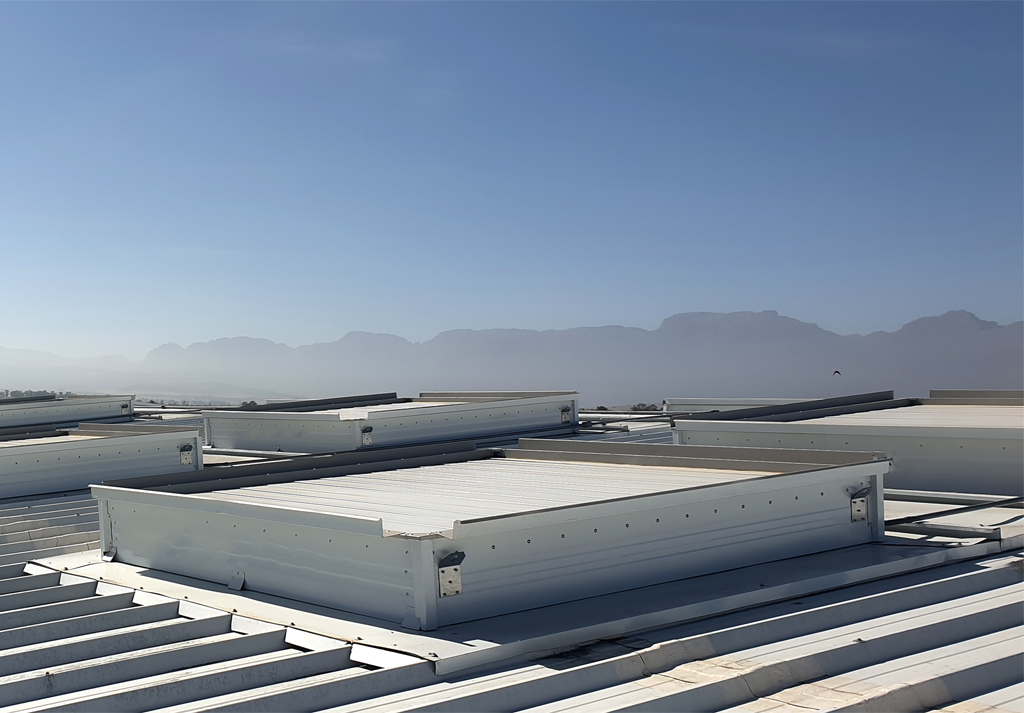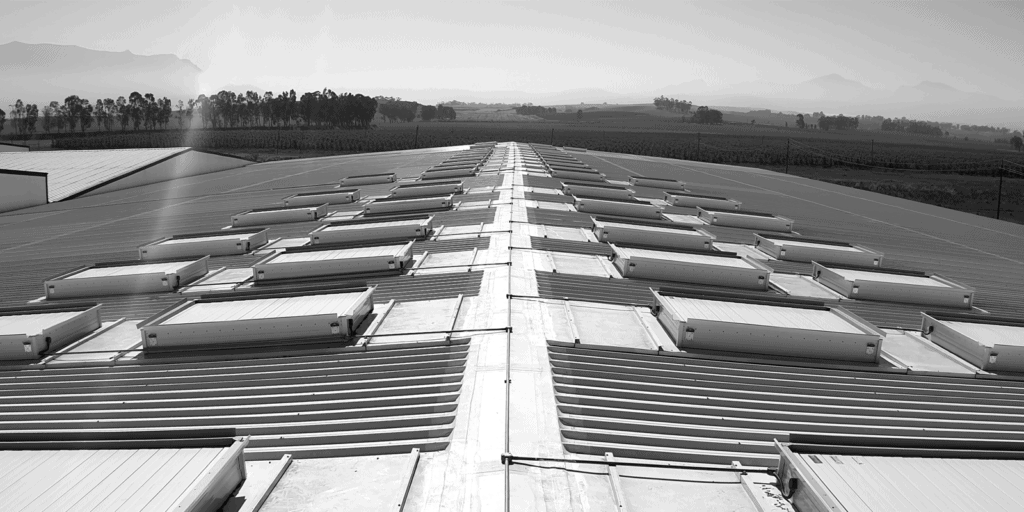Introduction
In the world of fire and smoke control, two key systems often take the spotlight: smoke ventilators and sprinklers. SANS 10400 Part T and EN12101 provide the standards and guidelines that govern these systems, ensuring the safety of building occupants during fires. This blog explores the significance of both smoke ventilators and sprinklers and emphasizes their interdependent roles in effective fire control, with a special focus on the integration of smoke curtains to create a comprehensive fire safety system.

The Importance of Smoke Ventilators
Smoke ventilators, as outlined by SANS 10400 Part T, are essential components of any comprehensive fire control strategy. Their primary role is to facilitate the safe evacuation of building occupants by controlling and removing smoke generated during a fire. Here’s why they are crucial:
1. Maintaining Visibility
Smoke ventilators aid in maintaining visibility within a building during a fire, allowing occupants to navigate safely and firefighters to perform their duties effectively.
2. Preventing Smoke Spread
By removing smoke, they help prevent smoke from spreading to unaffected areas of the building, reducing the potential for smoke inhalation and property damage.
3. Enhancing Tenability
Effective smoke control contributes to tenable conditions in escape routes, allowing occupants to breathe more easily and exit the building.
4. Legal Compliance
Compliance with SANS 10400 Part T ensures that building designs meet the necessary fire safety standards, which is a legal requirement in South Africa.

The Significance of Sprinkler Systems
Sprinkler systems, in line with EN12101, serve as active fire protection measures. Their function is to suppress or extinguish fires by releasing water, and they offer several advantages.
1. Immediate Response
Sprinklers are designed to respond instantly to the heat of a fire, helping to contain and control it before it can spread.
2. Reduces Heat
By reducing the heat of the fire, sprinklers aid in preventing flashovers and the creation of thick, toxic smoke.
3. Minimises Property Damage
Quick response by sprinklers can significantly reduce property damage, making them a valuable asset in fire control.
4. Lifesaving
In addition to property protection, sprinklers can save lives by controlling the fire’s growth and progression.
To maximise fire safety, it’s important to recognize the complementary nature of smoke ventilators and sprinklers.
1. Coordination
Effective coordination between these systems is vital. Smoke ventilators create an environment with improved visibility and reduced smoke, enhancing the effectiveness of sprinkler systems.
2. Tenability
While sprinklers work to suppress fires, smoke ventilators help create tenable conditions for building occupants to escape, reducing the risk of smoke inhalation.
3. Minimizing Water Damage
Smoke ventilators can also be used to control the flow of water used by sprinkler systems, preventing water damage to property and preserving the structural integrity of the building.
The Role of Smoke Curtains
Smoke curtains are often overlooked but play a vital role in this dynamic trio. Smoke curtains act as fire and smoke barriers, preventing the spread of smoke and flames. When strategically placed, they guide smoke toward smoke ventilators and contain the fire, enhancing the effectiveness of both smoke ventilators and sprinklers.
Conclusion
In the realm of fire control and smoke management, the synergistic relationship between smoke ventilators, sprinklers, and smoke curtains cannot be overstated. These systems, each with its unique functions, work together to create a robust fire safety strategy, maximizing the safety of building occupants and minimizing property damage. Architects, engineers, and building owners must appreciate the interdependence of these systems and implement them in harmony to ensure comprehensive fire and smoke control.
By adhering to SANS 10400 Part T and EN12101, and by recognising the importance of this integrated approach, we can build safer and more secure structures for all. It is important to emphasise the need for both sprinkler and ventilation systems to work in harmony to ensure the safety of building occupants. Sprinklers and smoke heat exhaust ventilation systems (SHEVs) can complement each other but one needs to acknowledge the complexity of their interaction. The emphasis should be noted on the importance of preserving life and maintaining the temperature of smoke for safety



